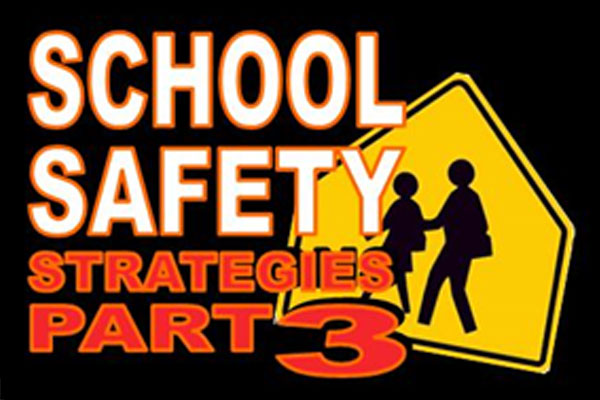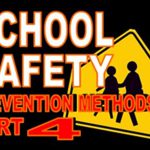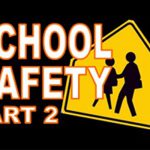FIND OUT THE DIFFERENT LEVEL SCHOOL SAFETY STRATEGIES (INDIVIDUAL, RELATIONSHIP, SOCIETY, AND COMMUNITY) AND TIPS FOR VIOLENCE PREVENTION IN THIS THIRD INSTALLMENT OF A MULTI-PART EDUCATIONAL SERIES ON SCHOOL SAFETY.
As this installment of the “Way of the Warrior” blog is being written (April 26, 2018), the number of mass shootings in the first few months of 2018 has reached 91 (April 23, 2018 – Mass Shooting Tracker).
- Engaging strategies to improve school environments is necessary at the individual; relationship; community; and societal levels.
- Preventative measures must be realistically planned and acted upon.
- Diligent review, training, and cooperative measures must be a continuing routine to assure planning is vital and is at the best level to protect.
“Is it safe?” This question is posed by the character, a dentist and former Nazi, portrayed by Laurence Olivier in a famous scene from the film Marathon Man. It was directed by John Schlesinger (1976) and also starred Dustin Hoffman, Roy Scheider, and William Devane. Marathon Man is the film that made everyone afraid to go to the dentist. In regard to the subject here, that same question frames a growing concern about our schools.
INDIVIDUAL LEVEL STRATEGIES
Kids become what they learn, experience, and know. Strengthening abilities and their opportunities to participate in positive activities can significantly reduce the risk for violence. School-based violence prevention programs, are proven to reduce aggression and violent behavior (Centers for Disease Control and Prevention Task Force on Community Preventive Services Report and Common and Aggression and Violent Behavior 2012, Matjasko JL, et. al). These formal programs are relatively new adoptions in local public school environs. The curriculum focuses on many areas, including emotional self-awareness, emotional control, self-esteem; positive behaviors that are common to the basic tenets of martial arts training (courtesy, respect, honor, loyalty, perseverance, integrity, self-control, and indomitable spirit) for improved social skills, problem-solving, conflict resolution, and teamwork.
RELATIONSHIP LEVEL STRATEGIES
These violence prevention programs also improve relationships between students, peers, teachers, and families. Some school-based programs also help students know how to appropriately and safely intervene to stop an escalating violent episode between peers. The Olweus Bully Prevention Program, a building block at Makowski’s Martial Arts curriculum, is a great example of exactly how to address a conflict, get help, and assure ongoing prevention of such problems.
Many school-based programs help teachers build healthy relationships, model nonviolent attitudes and behaviors, and contribute to a positive school climate. These approaches teach educators effective ways to manage a classroom, resolve conflicts, and create positive student-teacher relationships. It is exactly what our “Walk-Up” philosophy is all about; treating others as you want to be treated, along with high-goal achievement. Coupled with our PPCT Management Systems and Human Factors Systems Instructor Certifications for law enforcement, corrections officers, school resource officers, and civilian professionals in education and healthcare; these safety defenses are based on the most up-to-date training. The programs (School Safety and Healthy Children; Disruptive Student Management; Threat Pattern Recognition; Defensive Tactics; Active Shooter Safety, etc.) document tactical, legal, and medical research, and deliver highly qualified and exacting training to provide and manage safe school environments.
Finally, by enhancing parent involvement in both academic and social aspects of their children’s school experiences, including prevention programs, family cohesion and communication are improved. Prevention approaches that involve the family, especially those that start early, can have substantial, long-term effects in reducing violent behavior (Centers for Disease Control and Prevention, C. Ferndon and T.R. Simon, “Striving to Reduce Youth Violence Everywhere”, 2012.
COMMUNITY LEVEL STRATEGIES
The social environment created in schools can influence the likelihood of violence. At the most basic level, the primary purpose of education is the welfare of the students. That requirement is most appropriately built on a foundation of academic excellence. Promoting learning as the primary enterprise in schools reduces violence (Centers for Disease Control and Prevention: School Connectedness). Effective classroom management practices, training and support meet the needs of students and create opportunities for open communication and decision-making.
The very nature of the school environment creates group interactions, based on similar and shared interests (e.g., clothes, activities, popularity, etc.). Social science refers to the behavior as “cliques”. It is considered a part of normal social development. However, left unmanaged, the cliquish behavior leads to misconceptions, exclusion, bullying, and opportunities for more violent behaviors.
In addition to the social environment of a school, physical features of the school environment can reduce violence. Methods increase natural surveillance and effectively provide for managing access to the building with well-marked entrances and exits that are continually monitored. A warm and welcoming environment is vital to a calming and positive atmosphere. It includes the presence of student body achievements and school pride; jointly and actively managed by administrators, teachers, and the students.
SOCIETAL LEVEL STRATEGIES
By creating layered systems of prevention, the conditions for violence prevention are improved. Addressing the social norms and ensuring that educational systems promote strong educational growth for all students are keys to assure both the safety and purpose of our schools – the education of our most precious resource; our children.
Role of Schools and Teacher’s Teachers and school environment obviously play an important role. The school and management can give training to teachers about how to create a friendly and helpful environment in the classroom and school so that students do not get involved in these types of damaging activities.
Parent and Family Role Parents are the first people that kids get to know on this planet and what these parents teach or expose them to is what the kids think are the best for them. If the environment provided by these parents is wonderful, then there is no chance of these kids indulging in violence. If parents want to see their kids not become violent or aggressive, then they can concentrate on doing the following things:
Meetings with children on a regular basis. The National PTA offers the following “Checklist to Help Prevent Violence in Schools.”
Ten things to do:
- Speak openly and frequently with your kids to understand their thoughts and concerns, even if the topics are difficult or embarrassing.
- Set clear rules and limits. Discipline and consequences improves responsible behavior empathy for others, control, and stress management.
- Know what is normal for your child and be aware of behavioral changes as indicators for addressing what may be troubling them.
- Do not be afraid to be a parent; Know when to intervene.
- Be involved in your child’s school.
- Join the school’s Parent Teacher Organization.
- Encourage and participate in community violence prevention and response plans.
- Encourage and participate in school violence prevention and response plans.
- Know how to deal with the media in a crisis situation.
- Work to influence authorities, e.g., school boards, education administrators, safety and law enforcement, etc.
Students and classmates role
Classmates and other students can play an important role in reducing this type of activity because they are the persons who are spending the most time with each other. Here is a list of some things to be aware of that can be helpful to other students to reduce student violence activity:
- Refuse to bring a weapon to school, refuse to carry a weapon for someone else, and refuse to keep silent about those who carry weapons.
- Welcome new students in school and help them in a new environment.
- Treat everyone as you would like to be treated. Acknowledge others. Say hello.
- Report any abnormal and suspicious activity to a trusted adult (teacher, school administrator, custodian, bus driver, parent, etc.).
- Trust your instincts. Your gut reaction is nature’s way of alerting you to a problem.
- Be respectful of yourself and others. Risky behaviors, locations, and people often lead to serious consequences.
The following infographic provides an abstract idea about “school violence” Infographics Credit Teaching Solutions:

PREVENTION:
In regards to an active shooter incident, it is critically important to know what to do before, during, and after in order to protect yourself; and training is essential to survival.
- Awareness provides:
- Recognition of suspicious behavior.
- Opportunity for prevention.
- In many instances, there are signs that a potentially dangerous situation may occur.
- Whether verbal threats, social media posts, or behaviors, they should not be taken lightly. Trust your instincts. It is better to be concerned and wrong than to do nothing and have been right about a bad situation that could have been prevented.
- Report concerns to trusted adults and authorities.
- Readiness to respond appropriately if the worst scenario occurs.
- Always take the time to assess your surroundings.
- There are best places to be, even in a crowd or closed environment.
- Always check and know your location and at least two ways to exit.
- Take the stairs – avoid elevators (the confined space and unknown of the other side of the door has dangerous possibilities).
The owners at Makowski’s Martial Arts and Fitness are actively engaged in providing specialized training and continually advancing their own. They are highly qualified, experienced, and certified instructors for law enforcement; public safety; and schools. For detailed information, regarding our programs and training, check out our expanding list of self defense credentials on our Instructors Page
NEXT UP: ACTIVE PREVENTION – ACTIVE SHOOTER – RUN, HIDE, FIGHT



